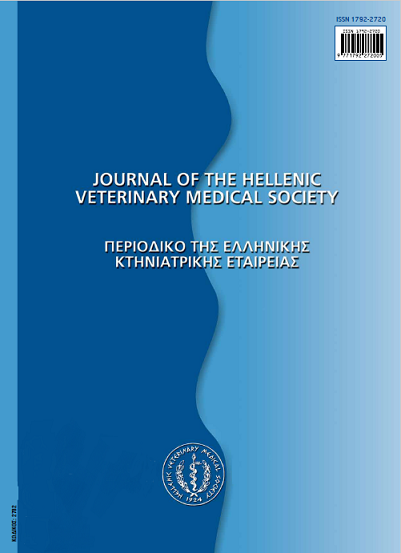Αντιμετώπιση ελλειμμάτων δέρματος στο περιφερικό τμήμα των άκρων στο σκύλο και στη γάτα

Περίληψη
Τα ελλείμματα δέρματος στο περιφερικό τμήμα των άκρων είναι πολύ συχνά και η αντιμετώπισή τους αποτελεί πρόκληση για τον χειρουργό. Αρχικά, οι ασθενείς πρέπει να ελέγχονται για την ύπαρξη συνοδών τραυμάτων και να σταθεροποιούνται. Στη συνέχεια θα πρέπει να γίνεται νεαροποίηση και καθαρισμός όλων των τραυμάτων. Η επιλογή της κατάλληλης τεχνικής για τη σύγκλειση του τραύματος καθορίζεται κυρίως από τους εξής παράγοντες: το μέγεθος του τραύματος, τον βαθμό κάκωσης των μαλακών ιστών και την παρουσία επιμολύνσεων και διαταραχών της αιμάτωσης. Αν και η κατά πρώτο σκοπό σύγκλειση είναι η μέθοδος εκλογής σπάνια μπορεί να εφαρμοστεί σε τραύματα στο περιφερικό τμήμα των άκρων. Η καθυστερημένη κατά πρώτο σκοπό σύγκλειση, η κατά τρίτο σκοπό σύγκλειση και η επούλωση κατά δεύτερο σκοπό μπορούν υπό προϋποθέσεις να βρουν εφαρμογή σε ελλείμματα στο περιφερικό τμήμα των άκρων. Ωστόσο, σε περιστατικά όπου η παραπάνω επιλογές δεν είναι εφικτές μπορούν να εφαρμοστούν τοπικοί ή απομακρυσμένοι κρημνοί, αξονικοί κρημνοί, μυϊκοί ή μυοδερματικοί κρημνοί, μοσχεύματα και μεταφορά ιστών με μικροχειρουργική.
Λεπτομέρειες άρθρου
- Πώς να δημιουργήσετε Αναφορές
-
TSIOLI (Β. ΤΣΙΩΛΗ) V., & DERMISIADOU (Ε. ΔΕΡΜΙΣΙΑΔΟΥ) E. (2018). Αντιμετώπιση ελλειμμάτων δέρματος στο περιφερικό τμήμα των άκρων στο σκύλο και στη γάτα. Περιοδικό της Ελληνικής Κτηνιατρικής Εταιρείας, 67(1), 5–16. https://doi.org/10.12681/jhvms.15618
- Τεύχος
- Τόμ. 67 Αρ. 1 (2016)
- Ενότητα
- Review Articles

Αυτή η εργασία είναι αδειοδοτημένη υπό το CC Αναφορά Δημιουργού – Μη Εμπορική Χρήση 4.0.
Οι συγγραφείς των άρθρων που δημοσιεύονται στο περιοδικό διατηρούν τα δικαιώματα πνευματικής ιδιοκτησίας επί των άρθρων τους, δίνοντας στο περιοδικό το δικαίωμα της πρώτης δημοσίευσης.
Άρθρα που δημοσιεύονται στο περιοδικό διατίθενται με άδεια Creative Commons 4.0 Non Commercial και σύμφωνα με την άδεια μπορούν να χρησιμοποιούνται ελεύθερα, με αναφορά στο/στη συγγραφέα και στην πρώτη δημοσίευση για μη κερδοσκοπικούς σκοπούς.
Οι συγγραφείς μπορούν να καταθέσουν το άρθρο σε ιδρυματικό ή άλλο αποθετήριο ή/και να το δημοσιεύσουν σε άλλη έκδοση, με υποχρεωτική την αναφορά πρώτης δημοσίευσης στο J Hellenic Vet Med Soc
Οι συγγραφείς ενθαρρύνονται να καταθέσουν σε αποθετήριο ή να δημοσιεύσουν την εργασία τους στο διαδίκτυο πριν ή κατά τη διαδικασία υποβολής και αξιολόγησής της.



